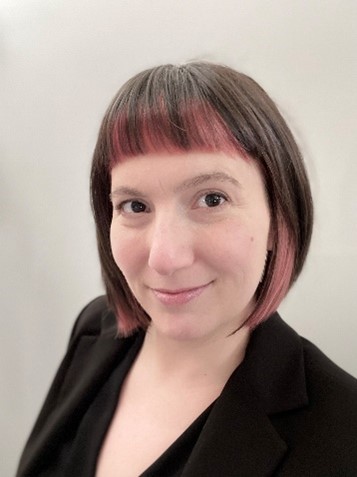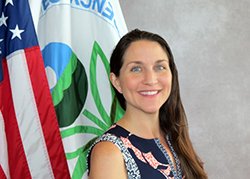Geophysical Method Selection: Matching Study Goals, Method Capabilities and Limitations, and Site Conditions
Sponsored by: U.S. EPA Office of Superfund Remediation and Technology Innovation (OSRTI) Superfund Task Force
Archived: Monday, October 29, 2018
This webinar will provide an overview of geophysical method selection. Although geophysical methods have the potential to improve site characterization and monitoring, the effectiveness of different geophysical methods at a particular site strongly depends on project goals (e.g., identifying discrete fractures) and site characteristics (e.g., lithology). No method works at every site or for every goal, and sometimes combinations of methods are needed. This webinar will (1) review the capabilities and limitations of a diverse set of surface, borehole and cross-hole geophysical tools, i.e., the "Geophysical Toolbox," (2) present a spreadsheet-based method selection tool for fractured-rock applications, and (3) introduce concepts and software tools for 'pre modeling' geophysical surveys prior to going to the field, to answer the question: "Can a given method see [fill in the blank] at my site?" Through ongoing technology transfer, we look to better equip remediation professionals to understand what is likely to be realistic and cost-effective when contracting geophysical services and to reduce applications of geophysics with unrealistic objectives or where methods are likely to fail.
This is part of a geophysics webinar series:
- Environmental Geophysics Applied to Site Characterization, Plume Mapping, and Remediation Monitoring
- Borehole Geophysics Applied to Bedrock Hydrogeologic Evaluations
- Geophysical Method Selection: Matching Study Goals, Method Capabilities and Limitations, and Site Conditions
This webinar is a result of Recommendation 9 of EPA's Superfund Task Force, which encourages the Superfund program to "utilize state-of-the-art technologies to expedite cleanup." Actions under this recommendation include expanding the use of new site characterization and remediation technologies and approaches to address contaminated sites.
https://www.epa.gov/superfund/superfund-task-force-public-participation-opportunities#webinar
Accessibility, Recording, and Content Disclaimer
Rehabilitation Act Notice for Reasonable Accommodation
It is EPA's policy to make reasonable accommodation to persons with disabilities wishing to participate in the agency's programs and activities, pursuant to the Rehabilitation Act of 1973, 29 U.S.C. 791. Any request for accommodation should be made to Cindy Frickle at 703-603-8763 or frickle.cynthia@epa.gov, preferably one week or more in advance of the webinar, so that EPA will have sufficient time to process the request. EPA would welcome specific recommendations from requestors specifying the nature or type of accommodation needed. Please note that CLU-IN provides both alternate phone call-in options and closed captioning for all webinars, and requests for these specific accommodations are not necessary.
Webinar Recording
By participating in this CLU-IN webinar, you automatically agree to authorize recording of audio and visual content presented during this live event and consent to subsequent use of this recording in the public domain by the U.S. Environmental Protection Agency. This recording may include questions, comments and poll responses provided by you during the live event in addition to your name, voice, image or likeness. This recording will be made available after the conclusion of the live event as part of the CLU-IN webinar archives, and will remain available indefinitely. If you do not wish to consent to the recording, please do not join the live event, and contact Jean Balent at 202-566-0832 or balent.jean@epa.gov to discuss your concerns.
Content Disclaimer
This webinar is intended solely to provide information to the public. The views and opinions expressed as part of this webinar do not necessarily state or reflect those of the U.S. Environmental Protection Agency. It is not intended, nor can it be relied upon, to create any rights enforceable by any party in litigation with the United States, or to endorse the use of products or services provided by specific vendors. With respect to this webinar, neither the United States Government nor any of their employees, makes any warranty, express or implied, including the warranties of merchantability and fitness for a particular purpose, or assumes any legal liability or responsibility for the accuracy, completeness, or usefulness of any information, apparatus, product, or process disclosed, or represents that its use would not infringe privately owned rights.
Presenter:
Fred Day-Lewis, U.S. Geological Survey (daylewis@usgs.gov)
Fred Day-Lewis is a Research Hydrologist with the USGS Earth Systems Processes Division - Hydrogeophysics Branch, where he conducts research, technology transfer, and training to support the application of geophysical methods to groundwater supply and remediation problems across the nation. Fred received a PhD in Hydrogeology from Stanford University (2001) and BS and BA in Hydrology and English from the University of New Hampshire (1994). He is a Fellow of the Geological Society of America, past President of the American Geophysical Union's Near Surface Geophysics Section, and past Vice President of the Environmental and Engineering Geophysical Society. He has served as an Associate Editor for the journals Water Resources Research, Groundwater, Hydrogeology Journal, and Geosphere.
Moderators:
 Cindy Frickle, U.S. EPA Office of Superfund Remediation and Technology Innovation (frickle.cynthia@epa.gov or 202-566-0927)
Cindy Frickle, U.S. EPA Office of Superfund Remediation and Technology Innovation (frickle.cynthia@epa.gov or 202-566-0927)
Cindy Frickle is a physical scientist with EPA's Superfund program where she reviews and propagates technical information to site cleanup professionals through Clu-In, EPA forums, and interagency channels. Prior to joining EPA, she spent time characterizing contaminated sites, coring sediments, studying microbes, and teaching. She completed her Biogeology MS and Geology BS in the University of Minnesota's School of Earth Sciences.
 Jean Balent, U.S. EPA Technology Innovation and Field Services Division (balent.jean@epa.gov or 202-566-0832)
Jean Balent, U.S. EPA Technology Innovation and Field Services Division (balent.jean@epa.gov or 202-566-0832)
Ms Balent is on the staff of the EPA's Technology Innovation and Field Services Division where she has worked to collect and disseminate hazardous waste remediation and characterization information since 2003. Ms Balent manages the Clean Up Information Network website and actively supports online communication and collaboration resources available to EPA. She formerly worked with the US Army Corps of Engineers Environmental Engineering Division in the Buffalo District. Ms Balent was also a member of the SUNY-Buffalo Groundwater Research Group where she constructed and tested large scale models of groundwater flow. Ms Balent has also conducted research relating to the Great Lakes, environmental remediation, and brownfields re-development. She holds a Bachelor's degree in environmental engineering from SUNY-Buffalo and a Master's degree in Information Technology from AIU.
Webinar Slides and References:
Webinar Slides and References:
Additional Resources:
If you have a suggested topic or idea for a future CLU-IN internet seminar, please contact:
Technology Integration and Information Branch
PH: 202-566-0832 | Email: balent.jean@epa.gov
Technology Integration and Information Branch
PH: 202-566-0875 | Email: adam.michael@epa.gov





